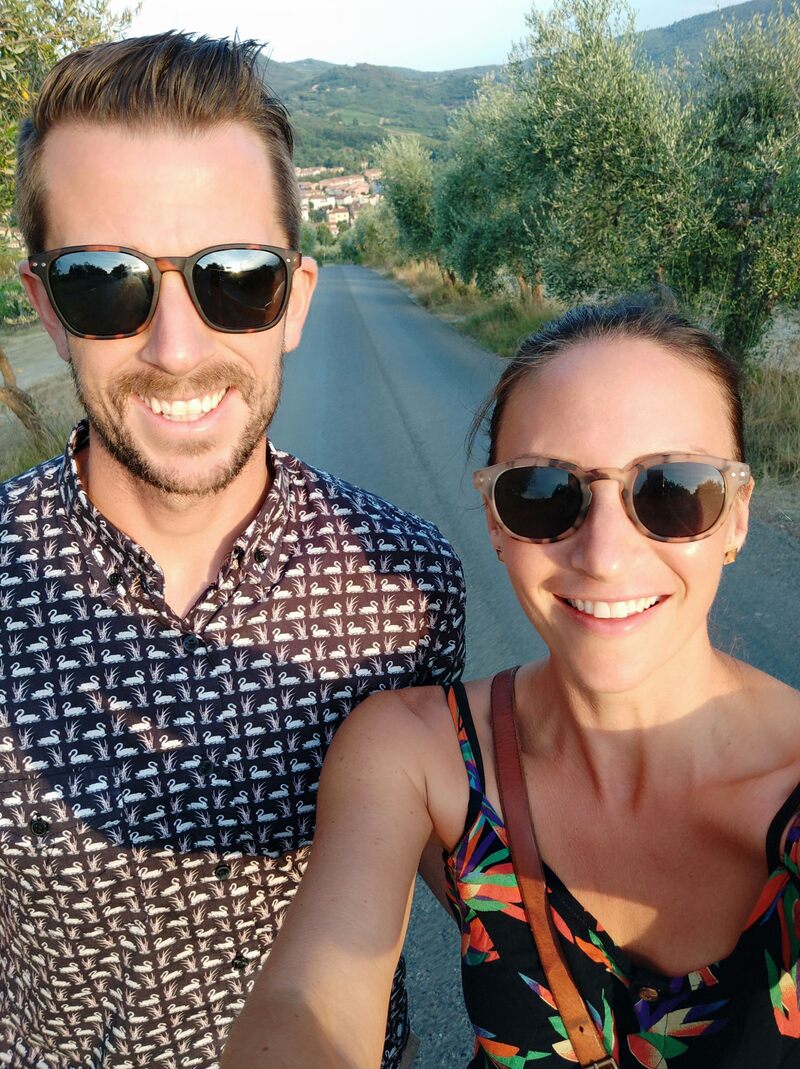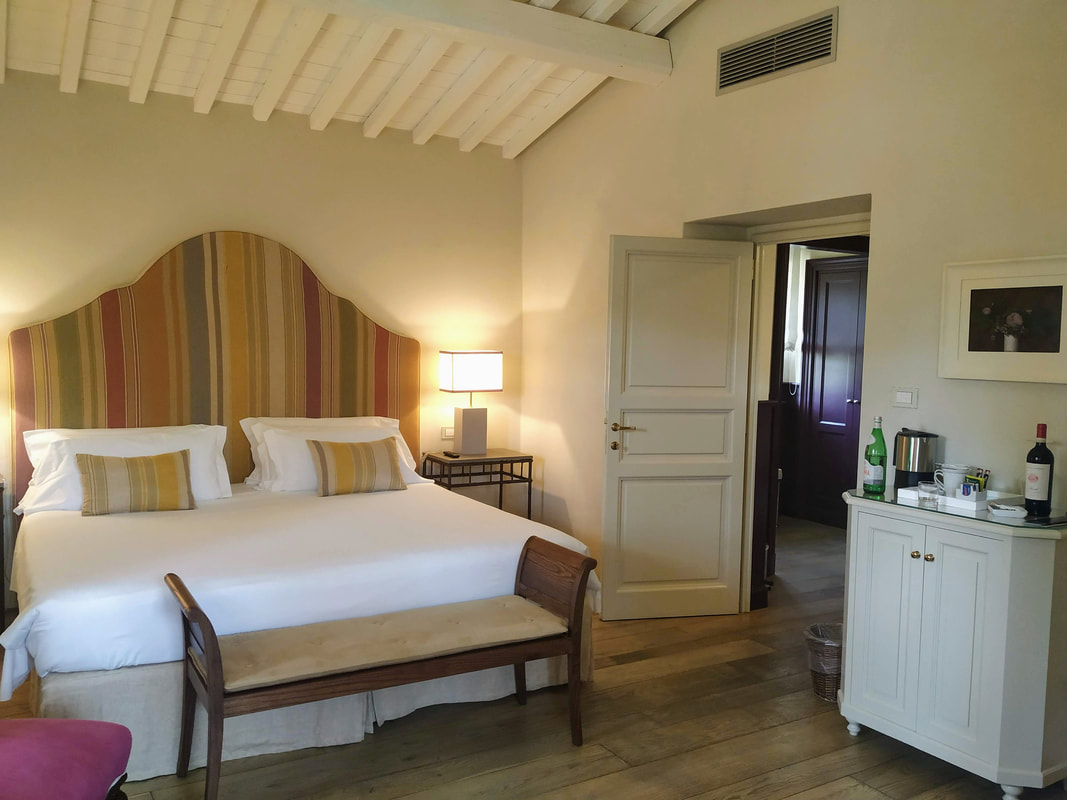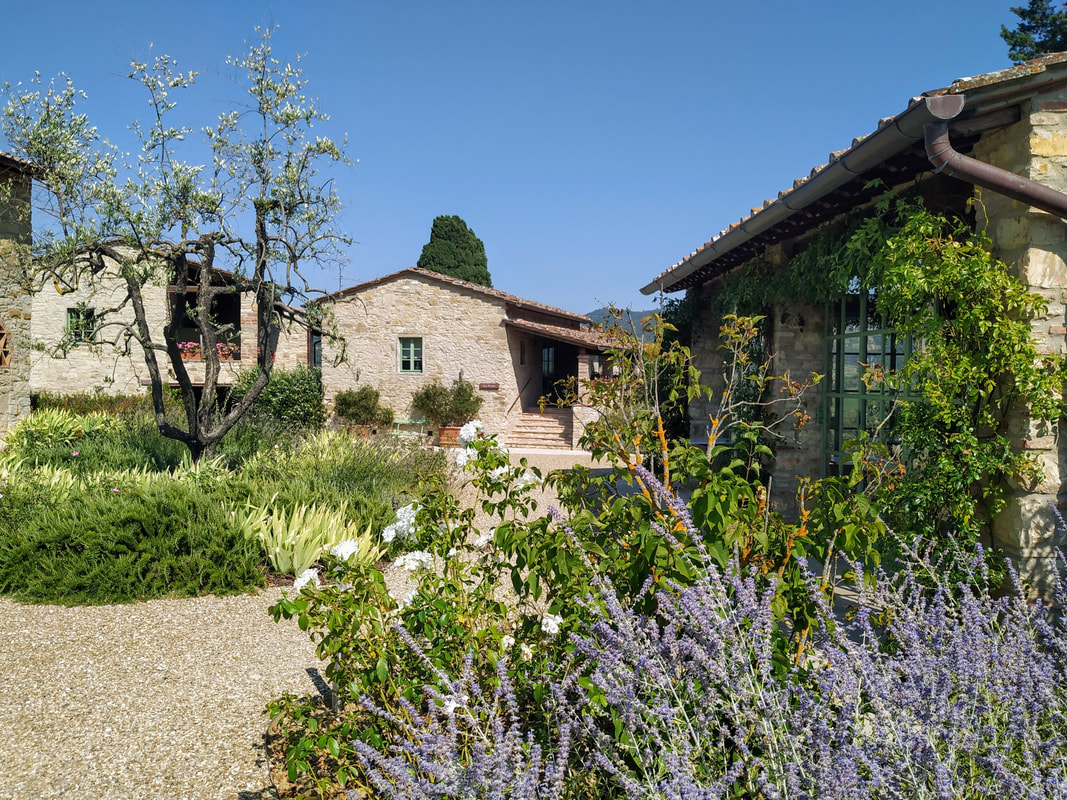|
Skipping down the narrow, olive tree-lined road toward Greve, we can hardly contain this euphoric feeling. The sun is about to set over the endless rolling hills of Chianti and the golden hour light glows against the rows of vineyards that extend as far as the eye can see in either direction. These hills baked today, as the temperature rose to nearly 100 degrees fahrenheit, preparing the grapes for their inevitable September harvest. After a day of driving all around the region, meeting with hotels and agriturismos, the setting sun brings a welcomed respite. Chianti is a hilly region in central Tuscany, historically regarded for its production of world renowned wines, simply called Chianti. To be labeled as such, the wine must contain at least 80% Sangiovese grapes, grown within the region. Although most of us hear Chianti and think of Hannibal Lecter and a side of fava beans, the region’s fame dates back thousands of years before The Silence of the Lambs. The Etruscans, before the Romans, cultivated vines here 2,500 years ago, working to develop hybrid grapes and experimenting with grafting methods. A couple of thousand years later, the first wines appeared in the 13th century, although the region itself wasn’t officially defined until 1716. In 1932, the regional lines were redrawn from just north of Siena to the foothills of Florence in the north, and one of the world’s most famous wine regions was born. Since, the area has drawn visitors from all over the world who not only come for the wine, but also ancient Tuscan villages that are scattered over the region’s hilltops. From Greve in Chianti, to Castellina in Chianti and Radda in Chianti, many of the area’s towns have proudly taken on the regional name. While each Chianti Classico wine can vary significantly, they all hold the DOCG rating (Denominazione di Origine Controllata e Garantita) the highest classification for Italian wines, and are recognized by the gallo nero (black rooster) sealon the bottle. We could go on about the history of wine in this region and the importance it has with regard to Italian, and specifically Tuscan, traditions and culture. Most importantly though, the wine is absolutely delicious and the views, from every angle, are stunning. After an early wake up we set off east toward Florence. In just over an hour we’re exiting the highway and traversing Chianti’s gently winding roads, passing vineyard after vineyard on our way to our first meeting of the day. We visit a quaint B&B and winery in a medieval hill town just outside of Castellina in Chianti, before seeing a beautiful farmhouse turned boutique hotel about 30 minutes north near Panzano. Both are incredible properties, with great history and authenticity, yet completely modern and comfortable accommodation. After lunch we drive up a steep country lane, two minutes from Greve in Chianti, to our final visit of the day and our home for the night, Borgo del Cabreo. Opened in 2017 by the owners of Tenute Folonari, Borgo del Cabreo is a luxurious boutique wine hotel that’s so picturesque it feels like it was dropped from the sky onto its perfect hilltop location. Composed of just four buildings and 11 rooms, the property is a collection of ancient farm houses which have been meticulously renovated. After a dip in the panoramic pool, we spend an hour reading under the sun and gazing out at the quaint town of Montefioralle just a kilometer or so across the valley. We sip on Chardonnay with Michele, Cabreo’s welcoming manager, as we review the property details and learn more about the winery’s history. Not bad for a Friday afternoon meeting. The next morning, after an excellent breakfast on the terrace, we stop at a nearby goat farm before going to a historic villa on the outskirts of Panzano. This traditional Italian property has all the feels, with ivy-covered stone walls, a restaurant in the old wine cellar, and terraced Italian garden. It’s the type of place that makes you feel as if you’ve suddenly gone back in time a few centuries. When the midday sun strikes it’s time for us to jump in the car and head back to Lucca, but not before we’ve fallen in love again with Chianti. There are hundreds of incredible wine regions around the world, all with their own unique story to tell, but Chianti feels different. It’s romantic, seductive even, without even trying. The rising and falling hills covered in thick forests, ancient vines, and medieval castles, invoke a sense of place that’s rarely found elsewhere. The beauty makes your heart ache. It elicits inspiration. It evokes happiness. And what else could you ever ask for in a place? Travel with us to Chianti Classico as we explore medieval hilltop towns and sleep in beautifully restored Tuscan farmhouses and working wineries.
|
Cohica TravelA travel design agency. Categories
All
Archives
October 2023
Follow us on Instagram @CohicaTravel
|



























 RSS Feed
RSS Feed
